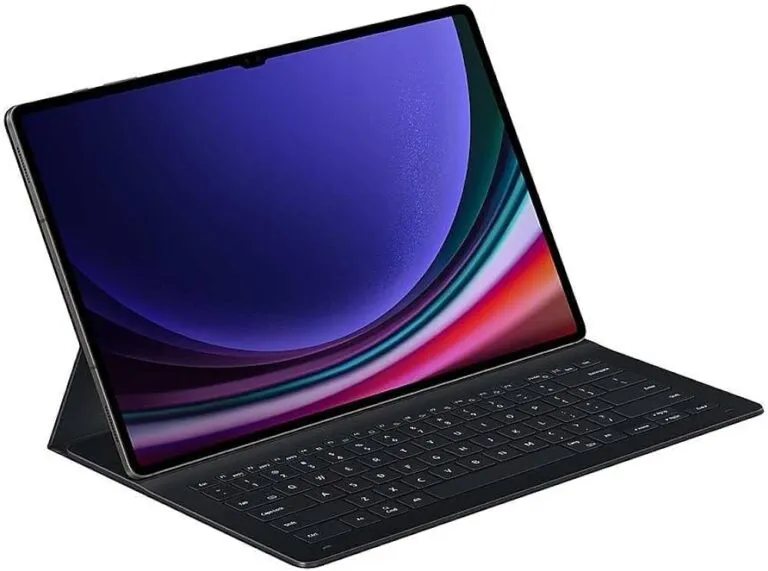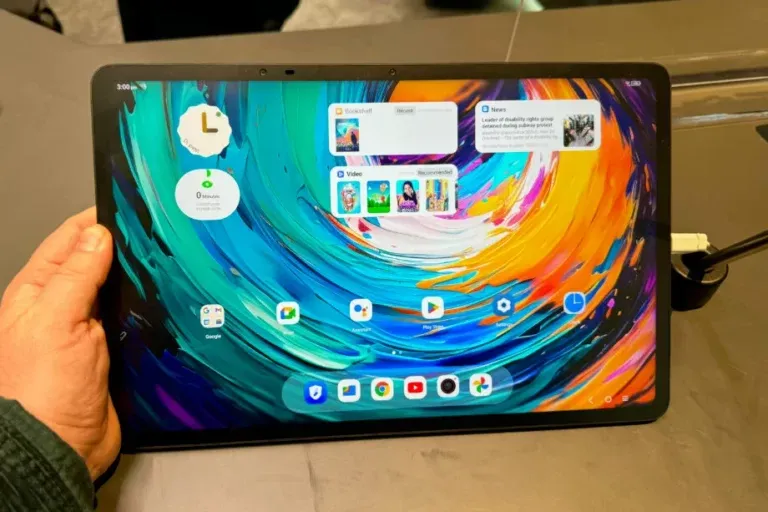TCL recently unveiled its latest premium tablet, the Nxtpaper 14 Pro, during CES 2024. Opposite it, the Samsung Galaxy Tab S9 Ultra is positioned as a high-end reference. In this article, we’ll look at the key features of these two tablets and compare them to help you make the best choice based on your needs.
Processor performance:
The Galaxy Tab S9 Ultra offers a generous range of storage options, with configurations up to 1TB. This tablet powered by Qualcomm’s powerful Snapdragon 8 Gen 2 can be equipped with 12GB or 16GB of RAM, offering a smooth multitasking experience and impressive responsiveness. The maximum storage capacity of 1TB provides ample space for games, applications, and large file storage.

Testing of the Galaxy Tab S9 Ultra demonstrated excellent responsiveness, effortlessly handling resource-intensive mobile games and intensive multitasking. Our benchmark test results put it at the top of Android tablets, although it’s slightly edged out by the iPad Pro M2.
For its part, the TCL Nxtpaper 14 Pro offers a rather average storage option of 256 GB, combined with up to 12 GB of RAM. While this capability may seem more modest compared to the Galaxy Tab S9 Ultra, it’s worth noting that the Nxtpaper 14 Pro’s focus is on balanced productivity and entertainment.
TCL calls the Nxtpaper 14 Pro a “productivity powerhouse,” suggesting that it is optimized to efficiently handle work and leisure tasks. With a storage capacity of 256GB, it provides ample space for apps, files, and media content, although users with massive storage needs might prefer the Galaxy Tab S9’s 1TB option Ultra.
Display technology:
The Galaxy Tab S9 Ultra offers a stunning visual experience with its 14-inch Dynamic AMOLED 2X display, featuring a peak brightness of 1,750 nits and an adaptive refresh rate of 120Hz. On the other hand, the Nxtpaper 14 Pro relies on TCL’s NXTPAPER 3.0 display technology, optimizing the screen for increased visual comfort. This technology reduces blue light by up to 61%, features flicker-free DC dimming, and automatically adjusts color temperature based on ambient conditions.
Stylus and productivity:
The Galaxy Tab S9 Ultra takes the edge with its included Samsung S Pen, delivering a smooth note-taking and drawing experience with a lightning-fast 2.8ms response time. The Nxtpaper 14 Pro, although lacking a built-in stylus, makes up for it with its productivity features and its NXTPAPER user interface offering three display modes for different applications.

Battery life :
The Nxtpaper 14 Pro stands out with a massive 12,000 mAh battery, promising extended battery life. Although the Galaxy Tab S9 Ultra is no slouch with an 11,200 mAh battery, the Nxtpaper 14 Pro seems to take the lead on paper. However, hands-on testing is needed to fully assess the effectiveness of power management on the Nxtpaper 14 Pro.
Camera Comparison
The Samsung Galaxy Tab S9 Ultra offers an impressive camera setup with a dual main array consisting of a 13 MP wide-angle sensor and an 8 MP ultra-wide-angle sensor. The dual front cameras of 12 MP each, with features such as HDR, offer flexible options for photography and video, meeting the expectations of demanding users.
The TCL Nxtpaper 14 Pro takes a more minimalist approach with a single 50 MP main camera on the rear, accompanied by an LED flash. Although the text does not detail the specifics of the camera, the high resolution suggests a potential capability for detailed images. However, details such as the presence of features like autofocus, HDR, or video capabilities are not specified.
In conclusion, choosing between the TCL Nxtpaper 14 Pro and the Samsung Galaxy Tab S9 Ultra will depend on your personal preferences and specific needs. If raw performance and the included stylus are your priorities, the Galaxy Tab S9 Ultra might be the better option. However, if you’re looking for a balance between productivity, visual comfort, and battery life, TCL’s Nxtpaper 14 Pro is definitely worth your consideration. It’s up to you to choose the tablet that best meets your expectations in 2024.
Related :
